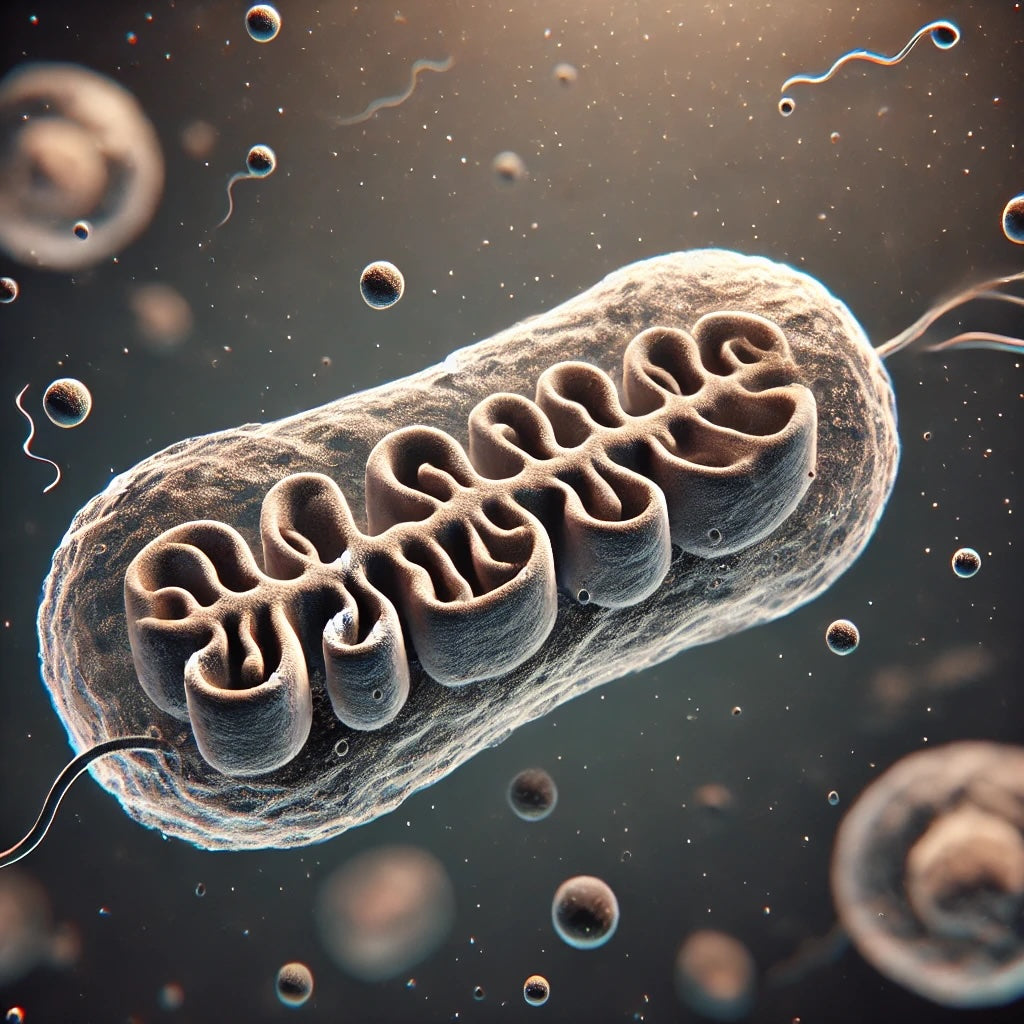Understanding Mitochondria—Your Body’s Energy Generators

Welcome to Part 1 of Our Mitochondria Series
This article is part 1 of our four-part series on mitochondria, the vital organelles that power every cell in our bodies. Throughout this series, we explore the significance of mitochondrial health, how it influences our overall well-being, and practical strategies to optimize their function.
The series covers the following topics:
- Understanding Mitochondria— Your Body’s Energy Generators
- Factors Affecting Mitochondrial Health—Nutrition and Lifestyle
- Mitochondrial Dysfunction—Implications for Aging and Disease
- Enhancing Mitochondrial Function—Supplements, Diet, and Lifestyle Interventions
Let’s delve into the fascinating world of mitochondria and uncover how supporting these tiny organelles can lead to enhanced energy levels, healthy aging, and improved overall health.
Mitochondria are tiny but mighty parts of almost every cell in the human body. Often called the "powerhouses of the cell," they’re responsible for creating the energy cells need to function. But mitochondria do more than just make energy—they help control processes in the body that impact everything from metabolism to healthy cell turnover, which is essential for overall health.
How Mitochondria Work
Unique Features
- Double Membrane: Mitochondria have two membranes—an outer and an inner one—that create special spaces within each mitochondrion to make energy.
- Their Own DNA: Mitochondria are unique in that they have their own DNA, separate from the DNA in the cell’s nucleus. This mitochondrial DNA is essential for producing proteins that support energy production.
Energy Production
Mitochondria are central to how our cells create energy, especially through processes that use oxygen:
- The Krebs Cycle: This process happens inside mitochondria and breaks down nutrients to make NADH and FADH₂, two molecules essential for producing energy.
- Electron Transport Chain (ETC): In this step, NADH and FADH₂ donate electrons that pass through the ETC, eventually creating ATP—the main energy currency of the cell.
- Oxidative Phosphorylation: This is the final step where ATP is produced, using the energy released during the ETC.
Mitochondrial DNA and Inheritance
Mitochondrial DNA (mtDNA) is passed only from mothers to their children. This mtDNA plays a critical role in energy production and is why mitochondrial health can sometimes have a strong genetic component. Mutations in mtDNA can lead to issues, especially in organs that need lots of energy, like the brain and muscles.
Beyond Energy: Mitochondria in Cell Health
- Calcium Balance: Mitochondria help regulate calcium levels within cells, which is important for various cellular processes, including muscle contraction and nerve function.
- Managing Reactive Oxygen Species (ROS): The process of making energy can also create by-products called ROS. In small amounts, ROS play a helpful role in signaling, but too much can lead to cell damage. Mitochondria have antioxidant systems to keep ROS in check.
- Cell Death and Renewal: Mitochondria help control apoptosis, a process where damaged cells are eliminated to make way for new, healthy ones. This is essential for normal development and disease prevention.
Why Mitochondria Are Important for Energy-Intensive Organs
- Heart: Heart muscle cells need a lot of ATP for constant contraction, so they are packed with mitochondria.
- Brain: Neurons need a steady supply of energy for tasks like sending signals, and mitochondrial health is closely tied to brain function.
- Muscles: Mitochondria support muscle energy needs for activities and exercise. Exercise, in turn, stimulates mitochondria to increase in number and efficiency.
Key Takeaway
Mitochondria are essential for producing the energy that keeps cells and organs working well. They play important roles beyond energy, including in cell health and resilience. Healthy mitochondria are essential for everything from keeping our hearts beating to supporting strong muscles and sharp minds.
Further Reading
- Alberts B, Johnson A, Lewis J, et al. Molecular Biology of the Cell. 4th edition. New York: Garland Science, 2002.
- Schon EA, DiMauro S, Hirano M. "Human mitochondrial DNA: roles of inherited and somatic mutations." Nature Reviews Genetics, 2012; 13(12):878-890.
- Rizzuto R, De Stefani D, Raffaello A, Mammucari C. "Mitochondria as sensors and regulators of calcium signalling." Nature Reviews Molecular Cell Biology, 2012; 13(9):566-578.
- Murphy MP. "How mitochondria produce reactive oxygen species." Biochemical Journal, 2009; 417(1):1-13.
- Turrens JF. "Mitochondrial formation of reactive oxygen species." Journal of Physiology, 2003; 552(Pt 2):335-344.
- Wang X. "The expanding role of mitochondria in apoptosis." Genes & Development, 2001; 15(22):2922-2933.
- Youle RJ, Strasser A. "The BCL-2 protein family: opposing activities that mediate cell death." Nature Reviews Molecular Cell Biology, 2008; 9(1):47-59.
- Brown DA, O'Rourke B. "Cardiac mitochondria and arrhythmias." Cardiovascular Research, 2010; 88(2):241-249.
- Lesnefsky EJ, Moghaddas S, Tandler B, Kerner J, Hoppel CL. "Mitochondrial dysfunction in cardiac disease: ischemia–reperfusion, aging, and heart failure." Journal of Molecular and Cellular Cardiology, 2001; 33(6):1065-1089.
- Attwell D, Laughlin SB. "An energy budget for signaling in the grey matter of the brain." Journal of Cerebral Blood Flow & Metabolism, 2001; 21(10):1133-1145.
- Lin MT, Beal MF. "Mitochondrial dysfunction and oxidative stress in neurodegenerative diseases." Nature, 2006; 443(7113):787-795.
- Hood DA. "Mechanisms of exercise-induced mitochondrial biogenesis in skeletal muscle." Applied Physiology, Nutrition, and Metabolism, 2009; 34(3):465-472.
- Little JP, Safdar A, Wilkin GP, Tarnopolsky MA, Gibala MJ. "A practical model of low-volume high-intensity interval training induces mitochondrial biogenesis in human skeletal muscle: potential mechanisms." Journal of Physiology, 2010; 588(Pt 6):1011-1022.




